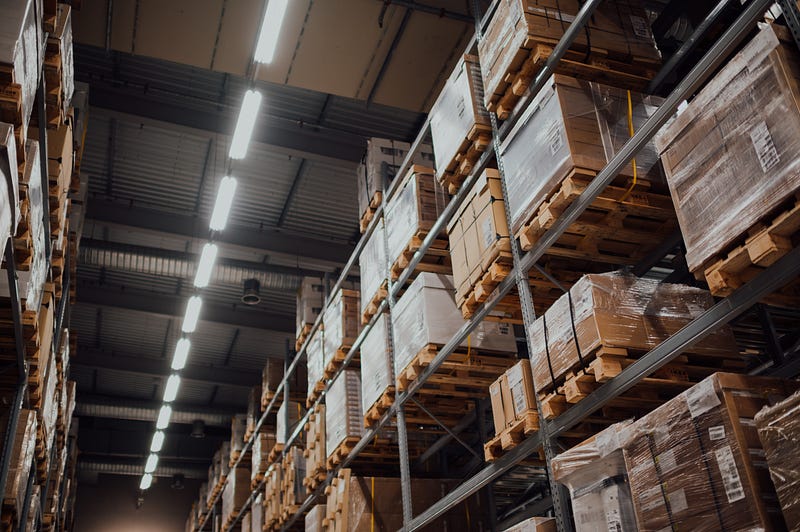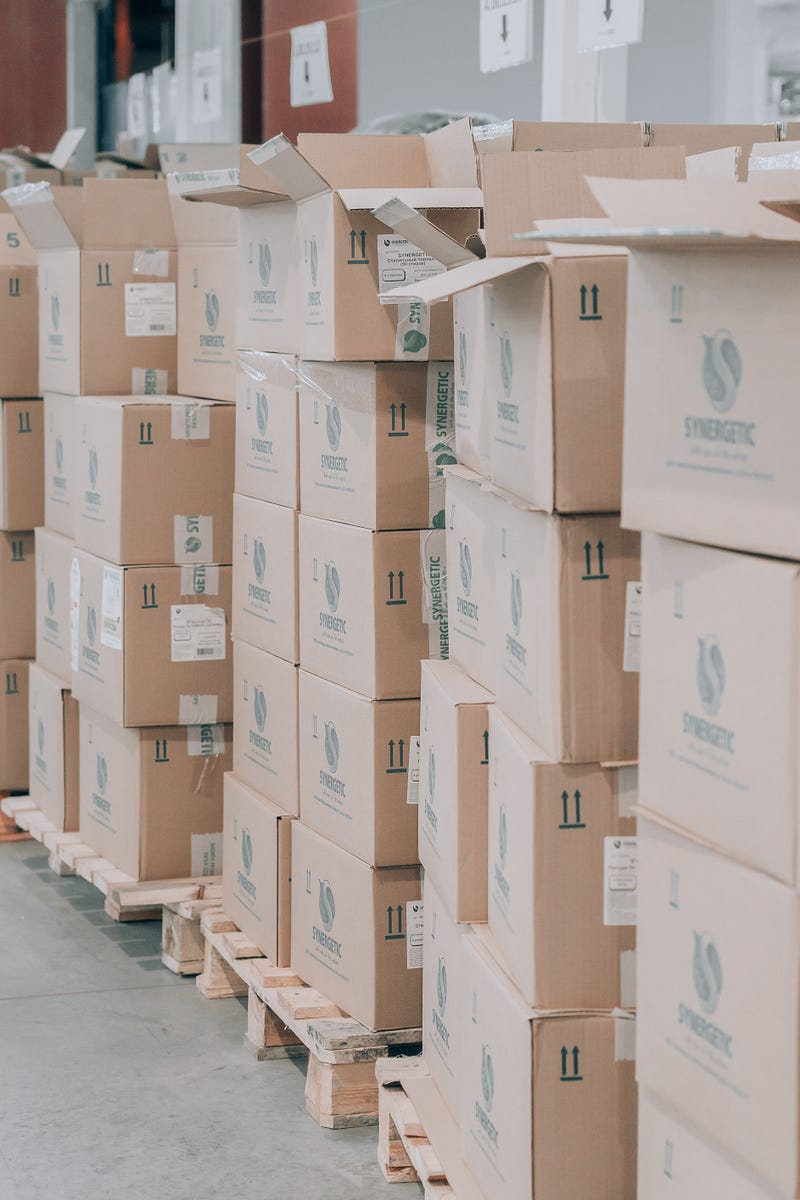Supply chain crisis an opportunity to optimise customer returns

Covid crisis, shipping labour shortage, great resignation & China
What is a global supply chain?
Saying The Global Supply Chain is simply wrong. There isn’t a single supply chain that spans worldwide and supplies everyone with their physical goods. It is, however, a complex network of diverse supply chains and sub chains at multiple levels. This diversity and complexity make it so challenging; when the pandemic stresses components of this complication, we all witness what happens to this house of cards that our current physical goods supply is.
And we all see what happens. We have a shortage of toilet paper! I am just kidding. Toilet paper is a bit more of a panic buying situation than a supply chain failure; however, the consumer result is the same, lack of items on the shelves.

What caused global supply chain disruption?
- Covid changed consumer behaviour probably forever. It forced people to be more sedentary, and most of them had time to contemplate their living situations for the first time. Some realised they needed to renovate that room that they had never had time before; this meant buying more building materials and furnishings. Those who worked from home wanted to improve their home office; this meant more computers and gadgets, and we make these from the precious semiconductors.
- All this increase in consumer buying behaviour and unprecedented demand was unexpected. Therefore it puts pressure on the world supply markets. Remember that Apple iPhone is designed in California, assembled in China and sourced from 43 countries. They do this to keep the production lean, resulting in lower prices for end consumers.
- 80% of world trade is done via shipping. The iPhone, for example, gets assembled in China and goes into a container, which is shipped on the big cargo ships to the ports all over the world. When it arrives at the port, the container needs to be unloaded and delivered to the warehouse using a lorry. Due to a shortage of long-haul lorry drivers, the goods take up space at the ports. They are not being delivered to brick-and-mortar shops as well as e-commerce fulfilment centres. The end-consumer then sees this as empty shelves at the stores or simply out of stock items online. This means that new shipping containers also cannot be docked in the ports, causing long queues for cargo ships around the ports.
- Productivity, in general, has gone down due to people being on furlough instead of going to work. Employers have to deal with social distancing regulations, so the amount of work that could be done pre-covid is not the same as the amount of work that workers are willing to produce right now.
- Another effect is the great resignation, the Yolo effect — people are really rethinking their lives. People found work opportunities working closer to home, so they aren’t interested in working at the port unloading containers. There is also a huge shortage of lorry drivers as they found opportunities delivering packages locally and opted out to work for Amazon doing last-mile deliveries and coming back to their families at the end of the day instead of sleeping in the lorry whilst doing long-haul deliveries. Lorry drivers are especially unhappy with the way they were treated during the economic shutdown by the government; therefore, some of them changed their profession. Out of 516000 HGV licence holders, only 278700 were actually driving lorries in the summer of 2020, which means nearly half of them were working somewhere else.
- China changed the global supply politics to a dual circulation policy and concentrated on meeting its domestic supply needs first. With China being the world’s factory, it has and will put pressure on the world’s supply of goods. We have become too reliant on China, and interdependence is a vulnerability; therefore, during events such as pandemics, the effects of such interdependency are especially heightened.
Customer returns are higher than ever
We all spend more time at home; we shop online, which means we return more goods than ever, as this is the nature of online shopping. For example, the biggest retailer Amazon works to remove friction and enable customers to buy more from them, so they make returns easier. And we all understand that a returned item exchange is better than no sale at all.

Optimising customer returns can help you mitigate supply shortages
With ever-rising returns volumes, it is not enough just simply sell off your returns as scrap on pallets for 5% of their retail value. Firstly because the supply shortage is here to stay, and as a manufacturer, you need to prepare to have enough stock for the future. Secondly, it is not environmentally friendly. Even when it makes sense to economically destroy the product, consumers are sensitive to that, and they do not like doing business with ecologically unfriendly companies.
Inefficient reverse logistics is already a huge loss for the e-commerce industry. The e-commerce return rate has been as high as 30% since 2020, and 67% of online shoppers check the returns page before making a purchase. The challenges of customer return are the shipping back, providing labels, storage, processing and reintroduction back into the market.

A lot of retailers do not have efficient returns management systems, so they end up having, what we call, a wall of shame. It is the place of limbo where all the returned items end up. Inventory is just sitting there, and the storage costs have to be covered. It costs too much to fix that issue, so the warehouse just pushes it aside and lets the issue build up. The storage costs creep up, the inventory loses value, and we end up with a lot of lost revenue as well, as now we have a completely different issue, which is environmental friendly disposal.
A lot of manufacturers opt-out to optimise their returns process as this helps them deal with supply shortages and deals with that wall of shame situation. This keeps customers and regulators happier by having a working and efficient returned goods process.
How to optimise your customer returns?
If you have a wall of shame situation, it probably means you need a third-party return logistics provider (3PRL) to help you to implement an effective solution. Firstly, we suggest working with a 3PRL provider to make sure that the wall of shame stops building up. Then, once the current returns procedure has been created, implemented and tested, we can work on extracting value from the wall of shame.

The return process could look as straight-forward as follows:
- The customer fills in an online form outlining their details and reason.
- They are presented with an instant return QR code and instructions.
- The customer then visits the local post office and ships the item using a QR code (free of charge to the customer and no printer required).
- 3PRL provider receives the item, repairs and repackages it.
- Item is then sent either back to customer or fulfilment centre.
So what’s next?
Reach out to a professional third-party reverse logistics provider; you can even reach out to us via www.tfix.co.uk because this is what we have been doing for 14 years, helping manufacturers make money from second-hand goods. 3PRL, such as TFix, can keep your returns onshore through innovative logistics strategies, application of technology and automation.
Then let the returns provider evaluate your situation and provide a tailored solution with a pricing strategy.
Once you are happy with your provider selection, let them build a project and execute it. You will make regulators and your customers happy, will get rid of your wall of shame, restock your saleable inventory and make money in the process.